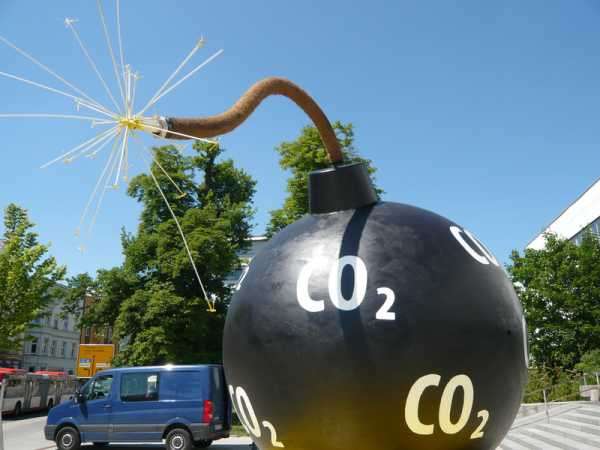
Ultimately, the Market Stability Reserve does exactly the opposite of what its name suggests (Photo: GuenterHH)
In the decade following the financial crisis and the ensuing economic downturn, the EU’s flagship Emissions Trading System (ETS) suffered from low prices and low abatement efforts because more allowances were available than firms needed to cover their emissions.
This led firms to save up a large stockpile of unused allowances. In an attempt to raise and stabilise prices, the EU established the so-called Market Stability Reserve (MSR).
It conditions the availability of allowances on the size of firms’ total stockpile: the more firms store, the more the MSR reduces supply.
Unfortunately, stockpile size is a poor indicator for expected scarcity and market stability. Not only past oversupply makes firms save up allowances, they also store allowances as a precautionary measure when they anticipate a future increase in scarcity.
One example was the EU’s latest announcement of more ambitious climate targets in autumn 2020. Prices reached record highs despite rising stockpiles, defying the economic slump triggered by the Covid-19 pandemic.
The MSR cannot distinguish between the different reasons for firms’ stockpiling and responds to both by contracting supply and thus increasing scarcity.
However, the distinction matters: contracting supply is effective against past oversupply but counterproductive in case of anticipated increases in scarcity.
In the latter case, it adds fuel to the fire and destabilises the market by escalating price movements. Burning the harvest is not a smart move when preparing for a future shortage.
The new rules proposed by the EU Commission would intensify the MSR’s impact. Its response to any change in the stockpile would become bolder, for better or worse.
This further undermines the self-stabilising forces of the market.
Double trouble
First, because it makes precautionary saving by firms futile at the market level by restricting future supply in response to each additional allowance saved by firms.
Second, because it invites unhealthy speculation. To see why, assume that the allowance price rises although there is no corresponding change in market fundamentals.
In a healthy market, rational traders have an incentive to engage in arbitrage against bubbles, disciplining the market. Now with the MSR in place, the additional abatement induced by higher prices increases stockpiles and triggers additional cancellations of allowances by the MSR.
It creates a change in fundamentals that matches the price change and turns hot air into facts. Such self-fulfilling prophecies and betting on them to occur undermine market stability.
Ultimately, the MSR does exactly the opposite of what its name suggests.
How can scarcity, stockpiles and prices be managed in a way that creates credible and stable signals for decarbonisation of key European industries?
Emission trading with a yearly decreasing cap, as in the EU ETS, is a very good starting point.
However, the MSR needs an overhaul. Its interventions should be based on a reliable measure of scarcity.
The best one available is the price of allowances. Regardless of whether the change in scarcity originates from the past, the present or is anticipated for the future, the price aggregates all information available to market participants.
In the context of the EU ETS, it also captures how much effort firms are willing to put in emission abatement.
If firms are working hard (prices are high), it makes sense to ease the strain a bit and increase the supply of allowances. If they are lazy (prices are low), one can tighten the belt and reduce the supply of allowances.
In short, if the EU Commission doesn’t want polluters to be lazy, it should condition the measure on how hard they are working to reduce an extra ton of emissions on the stockpile of allowances: their price. This is how markets stabilise themselves.
A price-based MSR would boost market stability and create transparency on how domestic climate policies interact with the EU ETS. Legal analysis indicates it could be implemented by a qualified majority.
Changing the measure of scarcity would require a clear stance by the EU on how it wants to trade off reductions in emissions against lower financial burdens for industry and consumers.
In times of strained public support for carbon pricing, this presents a chance to win back trust. Moreover, it can make it easier to link to other carbon markets. Those in the UK and North America already feature price-based stability mechanisms.
To address short-term abatement efforts, prices or market stability on top of achieving the climate target, the current MSR should be fixed instead of being reinforced and copied to the new ETS for buildings and transport as suggested in the commission’s proposal.
Burning stockpiles just for the stockpile’s sake is neither sustainable nor wise on Europe’s path to net-zero.
Source: euobserver.com



